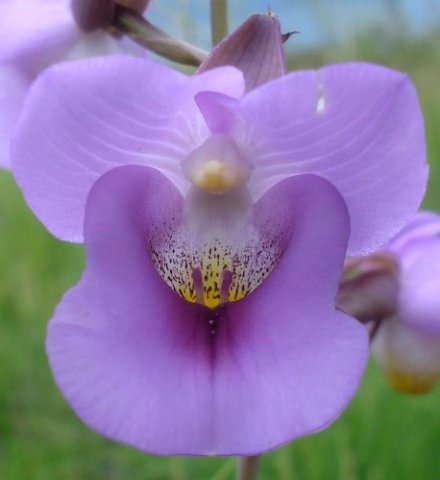Eulophia cucullata frontal view

Author: Ivan Lätti
Photographer: Judd Kirkel Welwitch
A frontal view of the Eulophia cucullata flower is all about its three petals, the lip and the two laterals. The three sepals are reflexed almost out of sight behind them.
Regularly curving, parallel vein lines are whitish on the rounded, pale lilac lateral petals that overlap in front of the dorsal sepal. Part of the lip has colour variety in spots and shades, at least something to catch any one of a variety of insect eyes, depending on the wavelengths within the vision range of the particular species.
Evolution sorts such matters out in slow processes over untold generations of matching plant and animal species in co-evolution. This facilitates the survival of both in partnership, albeit in continually modified form.
In the case of South African Eulophia species, the pretty and varied flower colours and shapes all hold false promise: All kinds of pollinators are tempted to search them, but never find any nectar. The searching activities themselves, however, do the pollination trick, as pollen also sticks to the defeated.
The disappointed insect might be used to family and friends depleting nectar from the more generous flower types before they get there. Or they do not think that far, carrying on their open flower inspections as hunger escalates and death may follow.
Limitations in understanding thus also serve a useful purpose, in spite of obvious disastrous effects. The dumb may form an integral part in the evolution of flowering plants. Apart from Erasmus who praised folly in his essay, Moriae Encomium, the dumb generally receive few accolades. There is a time and a place for everything in this world though. Just wait (Liltved and Johnson, 2012; Pooley, 1998).

